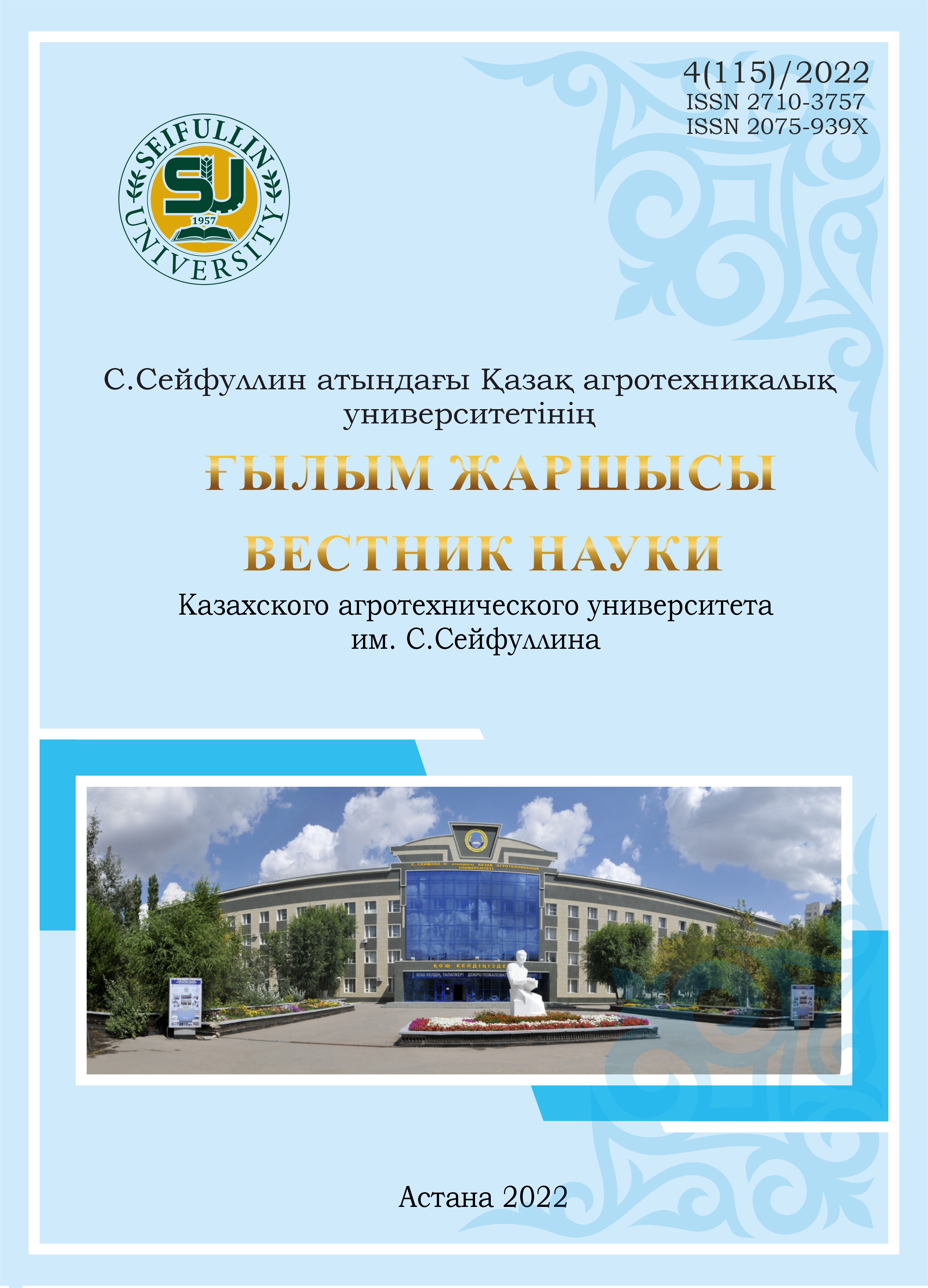YIELD AND QUALITY OF SPRING CAMELINA SEEDS IN THE CONDITIONS OF NORTHERN KAZAKHSTAN
camelina; fungicides; disinfectants; crop structure; oil content; sowing time; еxtrasol.
DOI:
https://doi.org/10.51452/kazatu.2022.4.1199Keywords:
camelina; fungicides; disinfectants; crop structure; oil content; sowing time; еxtrasol.Abstract
The results of the studies on the effect of the use of biological and chemical preparations sown against the background of different sowing dates on the structure of the crop and the quality of seeds of camelina are reflected. The studies were carried out in 2018-2020 on the experimental plot of NJSC " S. Seifullin Kazakh Agrotechnical University" in Akmola region. As a result of the research, it was found that the highest in terms of yield structure were options with a sowing date of May 25-30. The maximum number of pods on average was noted in the late sowing options, both with the insecticidal (75.2 pcs/plant) and fungicidal (74.7 pcs/plant) treatment of crops sown with Extrasol treated seeds. The number of seeds in the pod did not depend on the combined use of the biological and chemical preparations, but had a slight increase in that indicator when sown at a later date (by 8.6 - 1.1%). The yield of spring camelina slightly changed depending on the use of each preparation separately and exceeded the control by 0.11-0.34 t/ha when sown on May 15-20 and by 0.54-0.76 t/ha when sown on May 25-30. Variants using Extrasol + Piktor significantly increased the yield of camelina seeds. According to the oil content, there was a slight increase in the fat content in the variants treated with the drugs, compared with the control. However, the use of the Extrasol + Piktor complex increased the oil content to 39.74 - 40.05%, which was higher than in the control and in the variant of the combined use of Extrasol with an insecticide and separately. The same pattern was noted for the protein content in the seeds.

